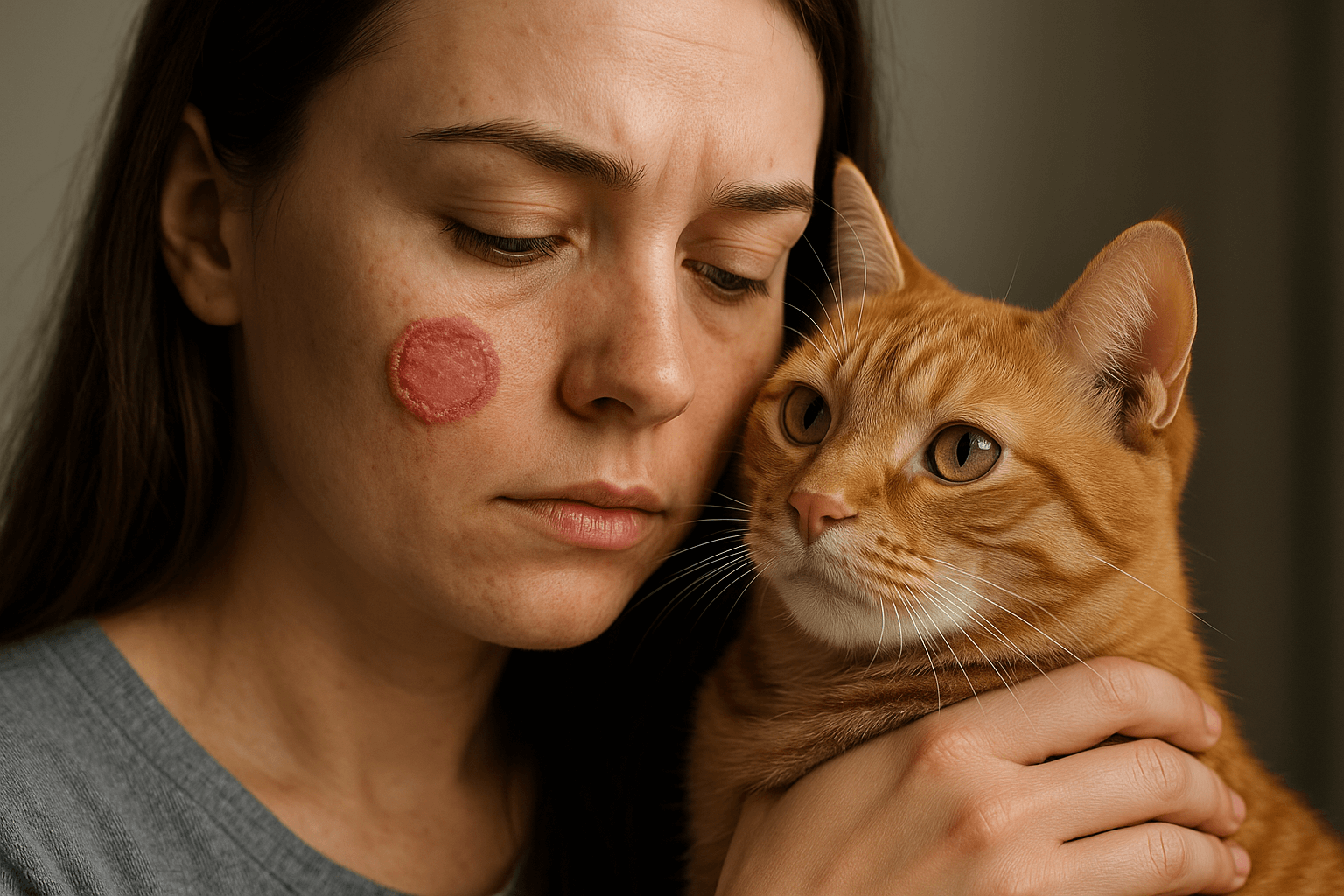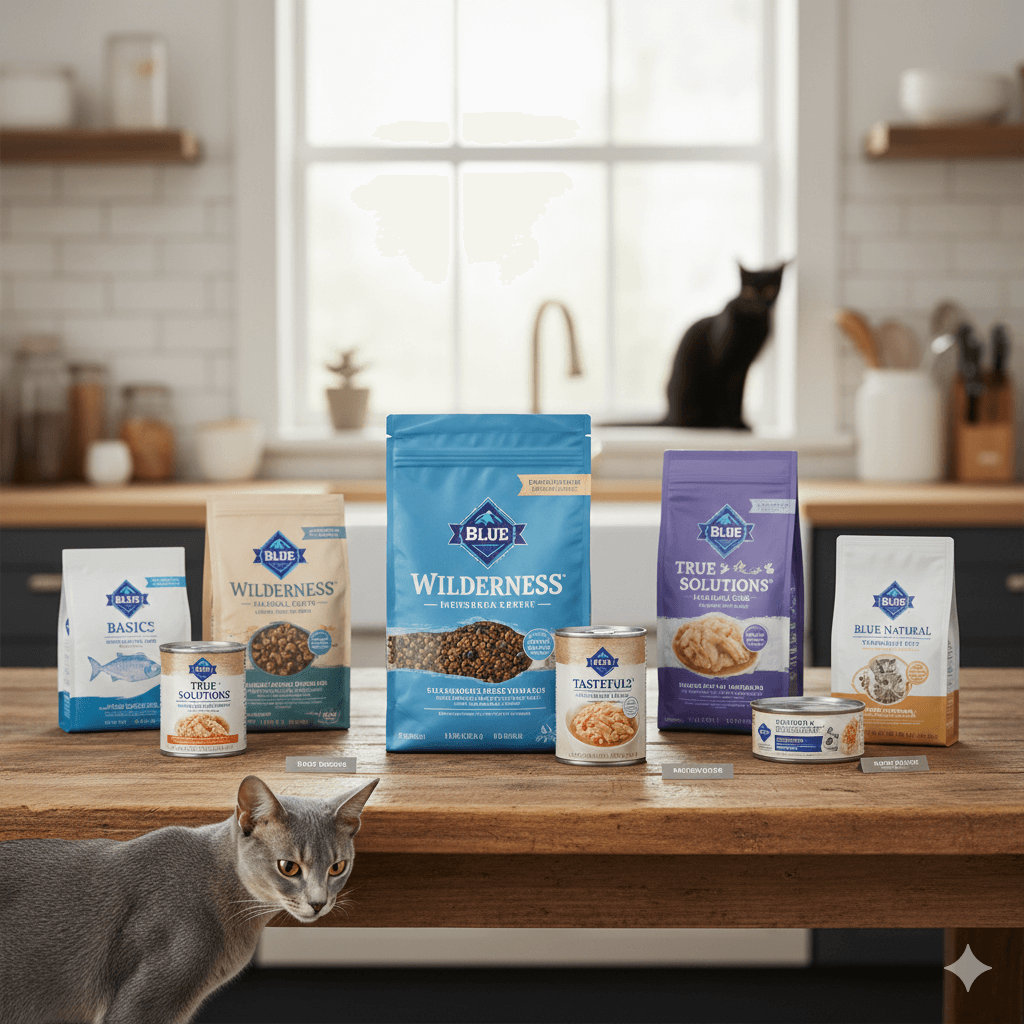Can I Give My Cat Ringworm? Understanding the Risks and Prevention
Ringworm is a common fungal infection that affects both humans and animals, including cats. Despite its name, ringworm isn’t caused by worms but by a fungus that thrives on skin, hair, and nails. Many cat owners wonder if they can inadvertently give their feline companions ringworm or how to protect themselves and their pets from this contagious condition. While ringworm is treatable, it requires prompt attention to prevent spreading and ensure a speedy recovery. In this blog post, we’ll explore the causes, symptoms, and prevention of ringworm in cats, as well as what you can do to keep your furry friend healthy and happy.
How Ringworm Spreads Between Humans and Cats
Ringworm is highly contagious and can spread through direct contact or contaminated environments. Understanding how transmission occurs is key to preventing outbreaks in your household.
Direct Contact with Infected Skin:
Touching an infected person or animal can transfer fungal spores, leading to ringworm in cats or humans.Sharing Contaminated Items:
Bedding, grooming tools, or toys used by an infected individual can harbor fungal spores and spread ringworm to your cat.Environmental Exposure:
Fungal spores can survive on surfaces like carpets, furniture, and floors for months, posing a risk to both pets and people.Close Proximity in Shared Spaces:
Living in close quarters increases the likelihood of transmission, especially if hygiene practices are neglected.Weakened Immune Systems:
Cats with compromised immune systems are more susceptible to contracting ringworm from their human companions.
By understanding these transmission routes, you can take proactive steps to minimize the risk of spreading ringworm between humans and cats.

Signs Your Cat May Have Ringworm
Detecting ringworm early is crucial for effective treatment and preventing further spread. Keep an eye out for these common symptoms in your cat.
Circular Bald Patches:
Ringworm often causes round, hairless patches on the skin, which may appear scaly or crusty.Red, Inflamed Skin:
Infected areas may become red and irritated, indicating a fungal infection.Excessive Scratching or Licking:
Cats with ringworm frequently scratch or lick affected areas due to itchiness and discomfort.Brittle or Broken Hair:
Hair around the infected area may break off easily or appear dull and brittle.White Flaky Residue on Fur:
A telltale sign of ringworm is the presence of dandruff-like flakes on your cat’s coat.
If you notice any of these symptoms, consult your veterinarian promptly to confirm a diagnosis and begin treatment.
Check this guide 👉Cat Ringworm Symptoms: Best 7 Expert Tips!
Check this guide 👉Ringworm on Cat Paw Pad: Best 7 Expert Tips!
Check this guide 👉How to Know If Your Cat Has Tapeworm: Best 7 Expert Tips!
Preventing Ringworm in Cats | Treating Ringworm Effectively |
|---|---|
Regularly clean and disinfect home surfaces | Use medicated shampoos prescribed by a vet |
Wash bedding and grooming tools weekly | Apply antifungal creams to affected areas |
Keep your cat’s living space dry and clean | Isolate infected pets to prevent spreading |
Avoid contact with stray animals | Administer oral antifungal medications as directed |
Schedule routine veterinary check-ups | Monitor progress and report concerns to your vet |
Steps to Prevent Ringworm in Your Household
Prevention is always better than cure when it comes to ringworm. Implementing these practical measures can help safeguard your home and your cat.
Practice Good Hygiene:
Wash your hands thoroughly after handling your cat or cleaning their belongings to reduce the risk of fungal transmission.Clean and Disinfect Regularly:
Vacuum carpets, mop floors, and sanitize surfaces where your cat spends time to eliminate fungal spores.Avoid Sharing Personal Items:
Refrain from sharing towels, brushes, or clothing between humans and pets to prevent cross-contamination.Quarantine New Pets Temporarily:
If adopting a new cat, isolate them initially and have them checked by a vet to rule out ringworm.Maintain a Healthy Environment:
Ensure proper ventilation and cleanliness in your home to discourage fungal growth.
By incorporating these habits into your daily routine, you can significantly lower the chances of ringworm affecting your household.
Treatment Options for Cats with Ringworm
Once diagnosed, treating ringworm in cats involves a combination of medication and environmental management. Here’s what you need to know about effective treatment strategies.
Medicated Shampoos and Dips:
Specialized antifungal shampoos or lime sulfur dips help kill the fungus on your cat’s skin and fur.Topical Antifungal Creams:
Applying creams directly to affected areas can target the infection and promote healing.Oral Antifungal Medications:
Prescribed pills or liquids address severe cases by attacking the fungus internally.Isolation During Treatment:
Keeping your cat in a separate room prevents them from spreading ringworm to other pets or family members.Regular Veterinary Follow-Ups:
Monitoring your cat’s progress ensures the treatment is working and adjustments can be made if needed.
With consistent care and professional guidance, most cats recover fully from ringworm within a few weeks.
Common Misconceptions About Ringworm
There are many myths surrounding ringworm that can lead to confusion. Clarifying these misconceptions helps you make informed decisions about your cat’s health.
Ringworm Comes from Worms:
Despite its name, ringworm is caused by a fungus, not parasites or worms.Only Outdoor Cats Get Ringworm:
Indoor cats are just as susceptible, especially if exposed to contaminated items or humans.Ringworm Always Causes Bald Spots:
Some cases may present with subtle symptoms, making diagnosis challenging without professional help.It’s Impossible to Prevent Ringworm:
While not entirely preventable, good hygiene and regular cleaning drastically reduce the risk.Ringworm Always Requires Oral Medication:
Mild cases may only need topical treatments, depending on the severity and location of the infection.
Understanding the truth behind these myths ensures you approach ringworm with accurate knowledge and confidence.
How to Support Your Cat During Recovery
Caring for a cat with ringworm goes beyond medical treatment. Providing emotional and physical support helps them heal faster and feel more comfortable.
Create a Stress-Free Environment:
Minimize noise and disruptions in your cat’s recovery space to reduce anxiety and promote healing.Offer Nutritious Food:
A balanced diet rich in vitamins and minerals boosts your cat’s immune system during recovery.Engage in Gentle Playtime:
Light play sessions keep your cat active without aggravating affected areas.Monitor Their Behavior:
Watch for signs of discomfort or worsening symptoms and report them to your vet promptly.Provide Comfortable Bedding:
Soft, clean bedding ensures your cat has a cozy spot to rest while they heal.
Supporting your cat holistically enhances their recovery process and strengthens your bond.
Cleaning Your Home After a Ringworm Outbreak
Dealing with ringworm doesn’t end with treating your cat—it’s equally important to sanitize your home to prevent reinfection. These steps ensure thorough cleaning.
Wash All Fabrics at High Temperatures:
Launder bedding, curtains, and clothing in hot water to kill fungal spores.Vacuum Carpets and Upholstery Daily:
Frequent vacuuming removes loose spores from soft surfaces.Disinfect Hard Surfaces:
Use pet-safe disinfectants on floors, countertops, and other non-porous areas.Discard Contaminated Items:
If certain objects cannot be cleaned properly, it’s safer to dispose of them to avoid spreading spores.Maintain Proper Ventilation:
Open windows and use fans to improve airflow, which discourages fungal growth.
A deep clean of your home eliminates lingering spores and creates a healthier environment for everyone.
Frequently Asked Questions About Ringworm in Cats
Can I catch ringworm from my cat?
Yes, ringworm is zoonotic, meaning it can spread between cats and humans through direct contact or shared items.
How long does it take to treat ringworm in cats?
Treatment typically lasts 6-8 weeks, depending on the severity of the infection and the cat’s response to medication.
Is ringworm dangerous for cats?
While not life-threatening, untreated ringworm can lead to secondary infections and discomfort for your cat.
Can indoor cats get ringworm?
Yes, indoor cats can contract ringworm through contaminated objects, humans, or even asymptomatic carriers.
What should I do if I suspect my cat has ringworm?
Contact your veterinarian immediately for a proper diagnosis and treatment plan to prevent further spread.
Protecting Your Cat and Home from Ringworm
While ringworm can be a frustrating and persistent issue, understanding its causes, symptoms, and treatments empowers you to handle it effectively. By maintaining a clean environment, practicing good hygiene, and seeking veterinary care when needed, you can protect both your cat and your household from this contagious infection. Remember, early detection and consistent treatment are key to ensuring a full recovery and restoring peace of mind. With patience and care, you and your feline companion can overcome ringworm together.
Is Royal Canin Good Cat Food? Best 7 Expert Tips! Learn the truth about this brand & get vet-approved advice on feeding, ingredients, and tailored formulas.
Dwarf Cat Lifespan: Best 7 Expert Tips! Discover how to ensure a long, healthy, and happy life for your short-legged feline companion.
Blue Buffalo Cat Food: Best 7 Expert Tips! Discover how to choose the right formula, feeding strategies, and nutritional benefits for your feline friend.
Canned Pumpkin for Cat Diarrhea: Best 7 Expert Tips! Natural remedy to firm stools, soothe upset bellies, and support gut health safely.





